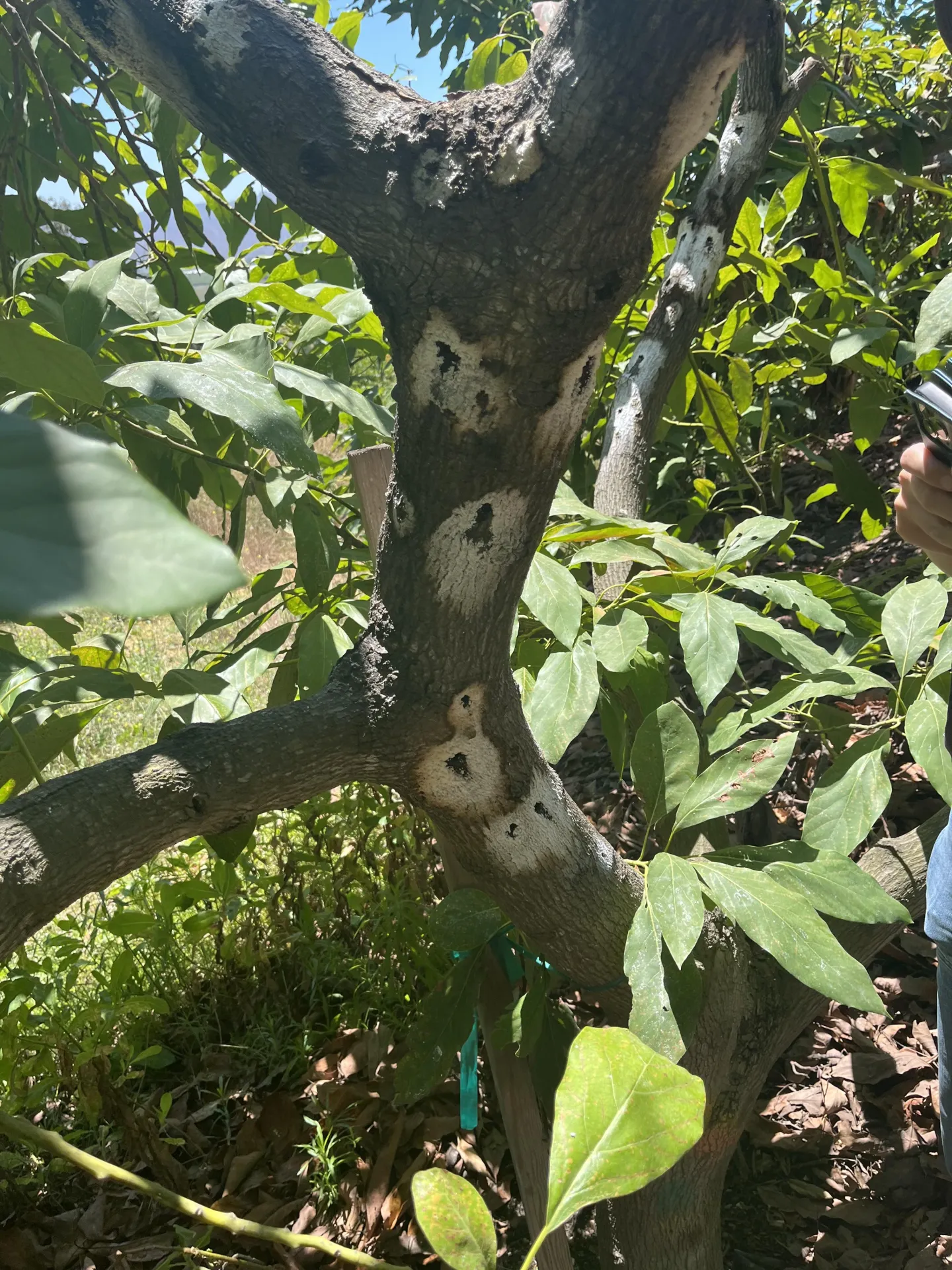Recently we were called out to inspect trees that had unusual cankers. Unusual, because it was a cluster of about 20 trees and the cankers had insect larvae in the liquid sap that had accumulated in the cankers.
When I see an avocado tree like this with discrete white cankers going up and down a branch or trunk, I immediately think of bacterial canker: https://ipm.ucanr.edu/agriculture/avocado/bacterial-canker/#gsc.tab=0
The canker is a tree’s reaction to stress, usually lack of water, which allows a bacteria to break through the bark and cause a lesion that fills with liquid sap. The sugar rich sap leaks out and leaves a residue at the site of infection. It creates a pocket of the sap and there is a flap of bark covering the pocket.

In this case, there was no pocket, but there was a hole that had collected sap and there were what appeared to be fly larvae bathing in the sap. The holes were neatly drilled into the bark, but only less than an inch deep and about ¼ inch wide. All the holes were of a similar dimension.
These trees were distressed. They looked like root rot infected trees and they had dead roots - prime targets for Invasive Shot Hole Borer: https://ipm.ucanr.edu/agriculture/avocado/polyphagous-shot-hole-borer-and-kuroshio-shot-hole-borer/#gsc.tab=0. Could they have been attacked by the borer and created these random cankers? The holes were too shallow for polyphagous shot hole borers, and there were no galleries where the borer would cultivate fungus for food. The thought was that it might be some other, new boring insect, so infected branch samples were taken and put into net covered incubator to see what might emerge from the holes………. Nothing.
What was going on? There are holes that are drilled into avocados, as well as other trees by woodpeckers. Often this is to look after boring insects or to store acorns. This is commonly seen in old trees or poles. When they are going after a storage site in a tree, the birds usually make a regular pattern. Below is a case of stored acorns in an avocado branch without the white sap. The sap probably has been washed out over time by rain and the wound has healed. In this coastal area, it’s commonly acorn woodpeckers that do this storage activity.

While we were debating the problem in this recent case, the grower staked out the trees, and by gosh there were four downy woodpeckers that were rat-a-tat tatting on the trees. They would fly from the avocados to a post nearby. They were the ones making the symmetrical holes. But the holes weren’t large enough for acorns, and we weren’t getting any insect emergence (aside from the few fly larvae that was found in a few holes). What were they doing making all these holes for?

Well, it may be that the woodpeckers are also going after the sap. There are sapsuckers, woodpeckers that go after sap and the insects that are attracted to the sap. Downy woodpeckers are noted mostly for going after insects not acorns, but these ones may have developed a taste for sugary avocado sap in this case, as well as for the insects that might show up there. It’s a nice story, at least it wasn’t some new insect pest ravaging avocados.
